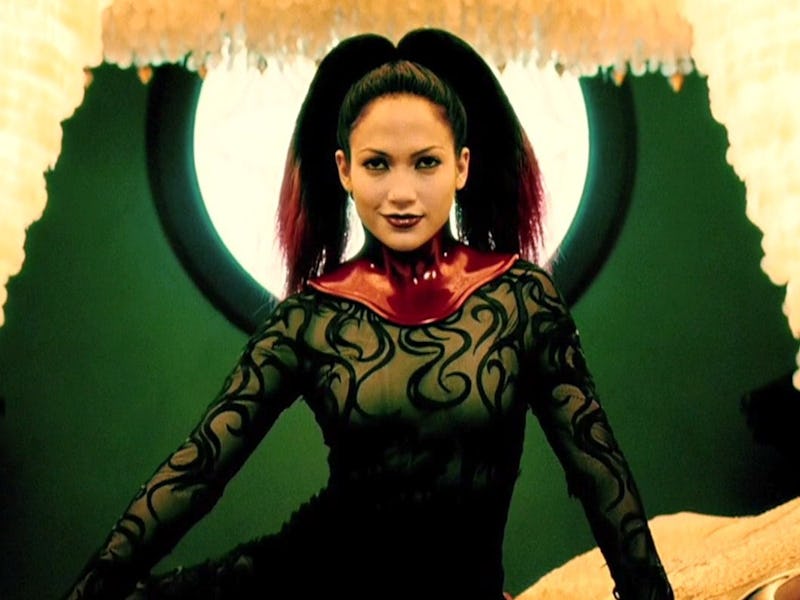'The Cell' Was the Ultimate Turn-of-the-Millenium Thriller
Fifteen years after its release, Tarsem Singh's insane extended music video is more relevant than it used to be.

Tarsem Singh’s 2000 psychosexual thriller/horror film The Cell is regarded as a comic bit of time-sensitive affection, like rap-rock or nu-industrial music. When it was released, music videos reigned supreme and those aesthetics were starting to influence what people watched in theaters. But The Cell’s of-its-time-ness doesn’t warrant any stigma. It’s a fun, surrealistic film with some genuinely chilling moments. I will ride for it any day.
The film has plenty of glaringly stupid elements. Indeed, the real-world plotline is almost outright copycatting Silence of the Lambs, down to the inclusion of an atonal, invasive orchestral soundtrack, the squirrelly-voiced, androgynous serial killer (Carl Rudolph Stargher, played by Vincent D’Onofrio), and powerhouse female investigator (well, actually, child psychologist, but with the spirit and determination of Clarice Starling) willing to go to any lengths to close the case. That’s Jennifer Lopez, singer of “Waiting for Tonight” and Gigli’s leading lady, as Dr. Catherine Deane.
The frame is particularly worth revisiting if you’re struggling with (or hate-watching) the new season of True Detective. It boasts a similar acting performance from a less craggy, more poker-faced Vince Vaughn. His work here is lifeless, but it’s almost effective in this; as the special agent hired to solve the murders perpetrated by the now-comatose killer, he’s supposed to be useless and ineffectual. It’s odd revisiting the short-lived days when he was being pitched as a dramatic lead.
Vaughn’s Peter Novak is the skeptic to JLo’s idealistic, self-sacrificing adventure-psychologist, who takes us into the movie’s version of the Matrix, cladding herself in a ribbed virtual reality spacesuit that recalls a bouquet of Twizzlers, plugging in, and disappearing into the dystopian desert purgatory of the mind of Vincent D’Onofrio’s serial killer. She seeks to locate the whereabouts of the women Stargher has killed, or imprisoned, by traipsing around his subconscious (or something). His mind adopts the sharp, garish imagery and dream logic of some of the music videos Tarsem directed in the ‘90s (see the eerie bathroom scene, and recall “Losing My Religion”), and is impressionistic and non-narrative in a way few blockbuster movies dare to be these days.
JLo and Vince’s time in the killer’s mind is not unlike Agent Cooper’s dips into the “red room” in Twin Peaks, or, you know, a Marilyn Manson visual. Stargher’s mind-world furthers the narrative only very simplistically; these sections are a freeform romp, providing both scares (d’Onofrio as evil, horned king and imp-like torturer) and simply indelible, half-blurred imagery (the horse split into segments, etc). Ultimately, it becomes a videogame Deane and Novak have to beat in order to return to reality.
This dream-like, almost-mythological imagery would become a hallmark of Tarsem’s movies following, visual fantasias informed by his background in non-narrative film. But the gothic approach fit the cultural atmosphere of the time and made the odd film a box office success. Does a film’s “datedness” diminish its charms? I just don’t see it with The Cell. It provides a truly odd cultural snapshot, some laughs, and plenty of visceral entertainment value.